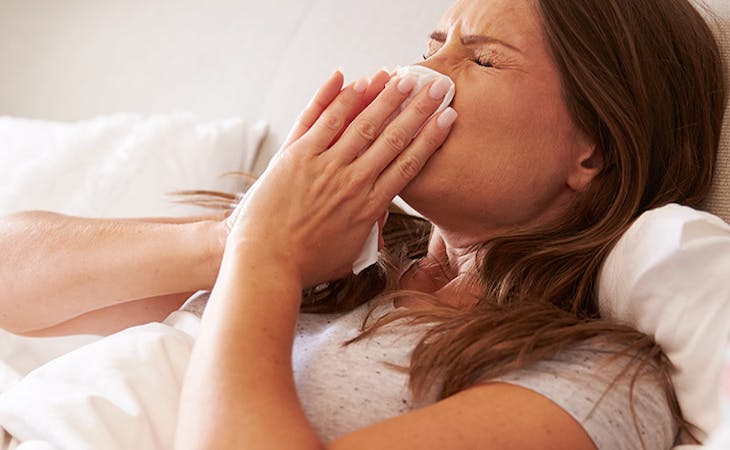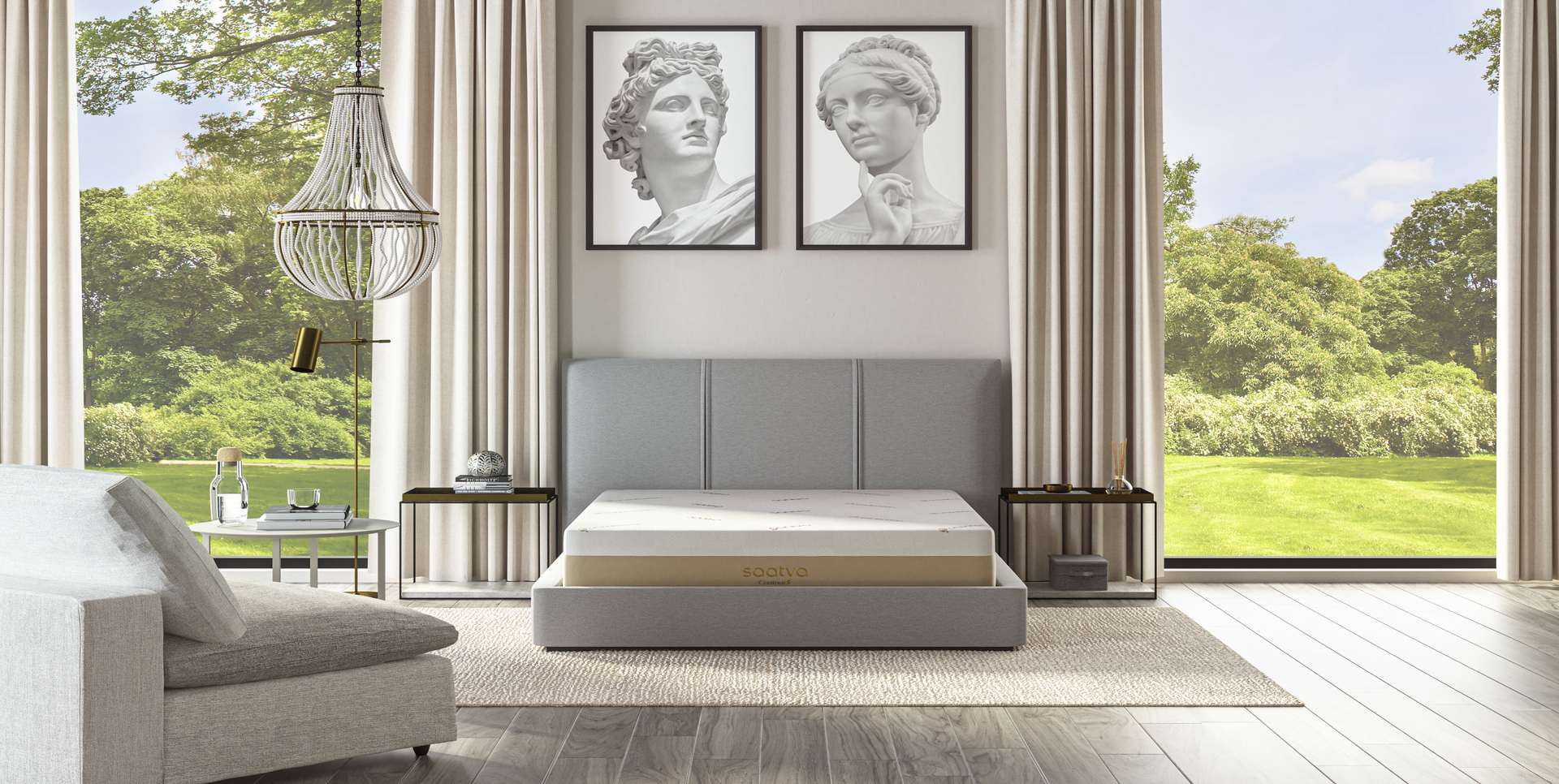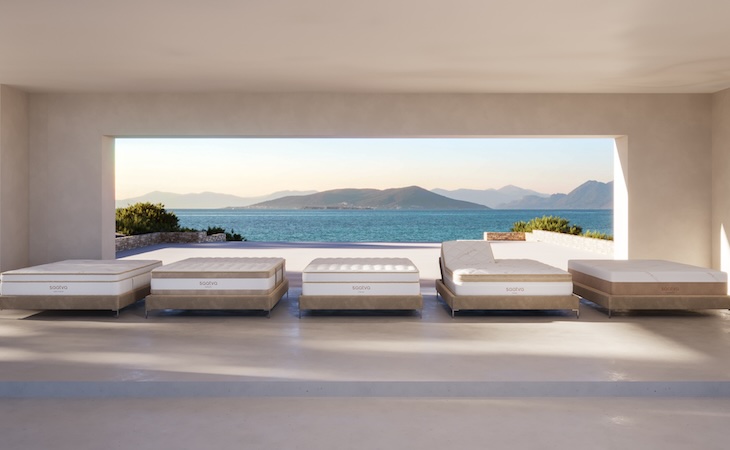With so many mattresses out there, choosing the right one can be hard enough. But for people who are prone to allergies and asthma, it’s particularly challenging. Allergens can accumulate in a mattress, compromising your breathing and ability to sleep. In fact, a study conducted by the National Institutes of Health found that more than 90% of U.S. bedrooms have three or more detectable allergens, and 73% have at least one allergen at elevated levels.
But what exactly is in your mattress that can trigger allergies, and most importantly, how do you keep irritants at bay? Here, we outline the most common allergens found in mattresses and explain how to choose the best mattress if you suffer from allergies.
What allergens are living in your mattress?
Most of us never think about the icky things that accumulate in our mattresses over time because they’re all typically harmless to most people. If you have allergies, though, the following list of allergens commonly found in mattresses can seriously mess with your sleep.
Dust mites
Dust mites are microscopic bugs that feed on the dead skin cells of humans and animals. Your mattress is the piece of furniture you spend the most time in close contact with, making it the primary location for the accumulation of dead skin cells—and a feasting ground for dust mites. According to the BBC, the average bed is home to up to 1.5 million dust mites.
While dust mites themselves don’t cause allergies, the enzymes released from their excrement after they gobble up your dead skin cells do. “Even [if] you’re not allergic, you will respond to dust mites debris and dust mites in an allergic way,” Philip Tierno, microbiologist and pathologist at New York University School of Medicine, tells Business Insider. “Everybody responds, especially to the feces of dust mites. Dust is basically everywhere.”
Mold and mildew
As you sleep, your bedding and mattress soak up sweat, contributing to the growth of mold and mildew. Both of these can cause respiratory issues or other allergic reactions in some people. And sweat isn’t just an issue for people who sleep hot—it’s estimated that the average human loses 10 ounces of fluid per night.
Pet dander
We hate to break it to all the dog and cat lovers out there, but pet dander—composed of microscopic flecks of skin shed by animals—can be a huge problem to those who are allergic to it. (According to the Asthma and Allergy Foundation of America, that’s up to three in 10 people, with cat allergies being about twice as common as dog allergies.)
What’s more, pets that spend a lot of time outdoors pick up all kinds of allergens, including dead skin cells of other animals, pollen, and mold spores. If you let Rocky into your bed, he’ll bring all that stuff with him. (Here’s how to keep your pet from ruining your sleep.)
How do allergies affect your sleep?
If you can’t breathe properly, you can’t sleep properly. People with allergies often have a lot of trouble falling asleep and getting quality shut-eye. A study published in the Archives of Internal Medicine showed that as many as 42% of people with allergic rhinitis (also known as hay fever) report they have difficulty falling asleep, compared with 18% of people without allergies. Nearly two-thirds (63%) of people with hay fever reportedly don’t get enough sleep, and 36% said they experience insomnia.
Chronic sleep deprivation, in turn, causes many short- and long-term health problems such as memory loss, a weakened immune system, and an increased risk of diabetes and heart attack. Plus, nasal congestion also puts people at risk for obstructive sleep apnea, a sleep disorder that is characterized by episodes of suspended breathing throughout the night.
What’s the best mattress for allergies?
Some mattresses are more suitable for allergy sufferers than others.
The best mattress for allergies is one made from memory foam or latex.
- Memory foam is a naturally hypoallergenic material that inhibits the spread of allergens. That’s because the dense structure of memory foam does not allow dust mites and other allergens to penetrate. The denser the memory foam, the better it will be at keeping the allergens away, not to mention that higher density foam will provide fantastic support and pressure relief. Some memory foam mattresses, particularly those that have been compressed and shrink-wrapped in a box, are subject to off-gassing, which can irritate those with chemical sensitivities or respiratory conditions. If you’re one of those people, you can do several things to avoid getting a mattress laden with particularly harsh chemicals. First, look for a memory foam mattress that uses a percentage of plant-based foams in place of some of the conventional polyurethane foam. Second, choose a mattress with certifications from OEKO-TEX or CertiPUR-US®1, as these require a minimum level of volatile organic compounds (VOCs). Third, find out where the memory foam has been manufactured. Foams made in the U.S. are subject to stricter health and safety regulations than some imported foams.
- Latex mattresses are another great option for allergy sufferers. Even people allergic to latex can generally sleep safely on latex mattresses because multiple washings during the manufacturing process eliminate the proteins that cause latex allergies. Natural latex is naturally resistant to dust mites. It’s also antibacterial and resistant to mold and mildew. Make sure your mattress is made with 100% natural latex, as synthetic latex will not have the same hypoallergenic properties. If you’re unfamiliar with latex and how it feels, know that it will give you the same contouring as memory foam with a bit more responsiveness.
Finally, remember that getting the right mattress is only the first step toward allergy-free sleeping. Invest in a mattress protector that is both waterproof and breathable as an extra layer of protection from spills and perspiration and to extend the lifespan of your mattress and help keep allergens out.
And of course, for ultimate allergy-free sleeping, don’t forget to allergy-proof your bedroom.
- CertiPUR-US® is a registered trademark of the Alliance for Flexible Polyurethane Foam, Inc. ↩︎






